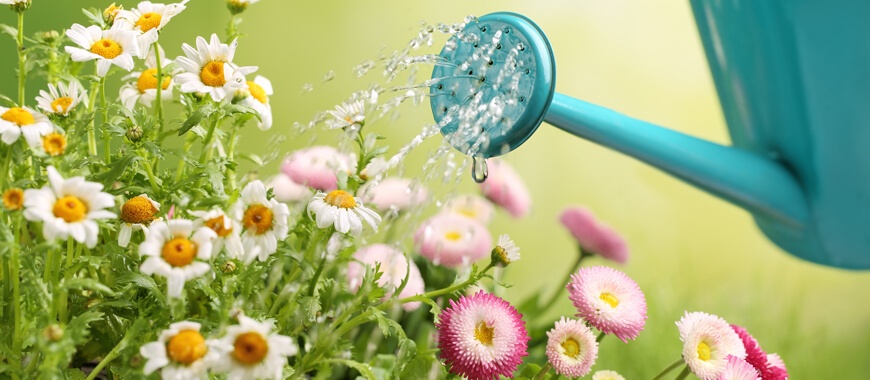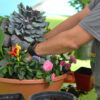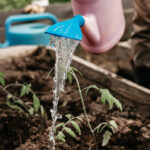The temperature rises, rain is scarce and your plants are looking bleak. Sound familiar? Fortunately, this trend doesn’t have to happen to your garden. That’s why we emphasize watering. When planting, especially with high temperatures, plants experience transplant shock and easily will because their roots are confined to a small area. Proper watering keeps your plants alive and healthy.
There’s an art to watering, and it’s not easy to master. Keep in mind your plants are living things, so if you ignore them, they will die. On the other hand, overwatering is also harmful. We’ve seen both situations happen and want to pass along the correct watering techniques.
When you plant, be sure to water it right away. Either let a hose slowly trickle over the area until deeply watered or slowly pour water over the soil until it no longer absorbs additional water. Repeat this several times each week during the first month or so of establishing your plants. The frequency is determined by factors like rainfall, temperature and light exposure. Regardless, be sure to check the soil every day by feeling a couple inches deep into the soil or using a soil moisture tester to determine if water is needed. Additionally, your plants may also indicate if they need water. When they are dry, their leaves may start to develop a dull gray color and begin to wilt. However, keep in mind that wilting in the afternoon is a normal response to heat for plants like Hydrangeas. Also, wilting can be caused by root rot which is a result of too much water.
While letting a hose trickle slowly over the area is preferred, it can be hard to determine how much water is being used. For trees, the water should be allowed to flow in the root zone and beyond for 30-45 minutes. For smaller shrubs and perennials, 10-15 minutes is sufficient. We like this slow watering because it allows the entire area to receive moisture which will encourage the roots to grow and expand. With a larger root area, you can wait longer between watering. For established plants, it’s best to water for the same duration, although the frequency can be reduced to around once each week depending on rainfall and temperature.
We want your plants to succeed, and improper watering can be prevented. If you are having difficulties watering or have questions on specific plant needs, feel free to give us a call. Happy Watering!



